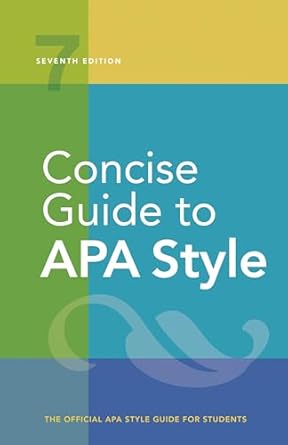[toc]
creating effective figures a guide for academic writing
Concise Guide to APA Style: 7th Edition (OFFICIAL)
Page 180 Review
Decoding Figures in Academic Writing: A Detailed Analysis
Creating effective figures is crucial in academic writing for conveying complex information concisely.
This ebook excerpt provides a comprehensive guide to constructing figures according to established standards.
Let’s delve into the key components and guidelines discussed.
The Anatomy of a Figure: Essential Components
The excerpt meticulously breaks down the essential components of a standard figure, highlighting the importance of each element.
As stated, “The basic components of a prototypical figure are shown in Figure 7.1 and are summarized as follows: number, title, image, legend, and note.” Understanding these components is the first step in crafting clear and informative figures.
- Number: “The figure number (e.g., Figure 1) appears above the figure in bold.” The numbering system provides a clear reference point for the reader.
- Title: “The figure title appears one double-spaced line below the figure number in italic title case.” A well-crafted title succinctly describes the figure’s content.
- Image: “The image portion of the figure is the chart, graph, photograph, drawing, or other illustration itself.” This is the core of the figure, visually representing the data or concept.
- Legend: “A figure legend, or key, if present, should be positioned within the borders of the figure and explains any symbols used in the figure image.” The legend is vital for interpreting the visual elements within the figure.
- Note: “Three types of notes (general, specific, and probability) can appear below the figure to describe contents of the figure that cannot be understood from the figure title, image, and/or legend alone.” Notes provide supplementary information, clarifying ambiguities and adding context.
Ensuring Clarity and Accessibility
Beyond the basic components, the excerpt emphasizes the importance of clarity and accessibility. “In addition, check all figures to ensure that sufficient information is given in the legend and/or note to make the figure understandable on its own.” This highlights the need for figures to be self-explanatory, minimizing reliance on the accompanying text.
Several key considerations are mentioned to achieve this:
- Sufficient Information: “sufficient information is given in the legend and/or note to make the figure understandable on its own (i.e., apart from the text).” This means the figure should provide enough context for the reader to understand its meaning without constantly referring back to the main text.
- Symbol Differentiation: “symbols are easy to differentiate.” Distinct symbols prevent confusion and ensure accurate interpretation of the data.
- Graphic Size: “the graphic is large enough for its elements to be discernible.” A sufficiently large graphic allows for easy viewing and prevents misinterpretation of details.
Numbering Figures: Maintaining Order and Consistency
The excerpt also outlines the proper procedure for numbering figures: “Number all figures that are part of the main text (i.e., not part of an appendix) using Arabic numerals—for example, Figure 1, Figure 2, and Figure 3.” This systematic approach ensures consistency and aids in the organization of the document.
The numbering should follow the order in which figures are first mentioned in the text: “Assign the numbers in the order in which each figure is first mentioned in the text, regardless of whether a more detailed discussion of the figure occurs elsewhere in the paper.” This logical sequence helps readers navigate the figures in relation to the written content.
Figures within appendices follow a different numbering convention, as noted: “Figures that appear in appendices follow a different numbering scheme (see Section 1.14).” This distinction maintains clarity and avoids confusion between figures in the main text and those in the appendix.
Formatting and Presentation
The excerpt also touches on the formatting aspects of figure numbers: “Write the word “Figure” and the number in bold and flush left (i.e., not indented or centered).” Consistent formatting enhances the professionalism and readability of the document.
Conclusion
This excerpt provides a valuable overview of the essential elements and guidelines for creating effective figures in academic writing.
By adhering to these principles, authors can ensure that their figures are clear, informative, and contribute significantly to the overall comprehension of their work.
The emphasis on clarity, accessibility, and consistent formatting ultimately elevates the quality and impact of the research.
Buy full ebook for only $18: https://www.lulu.com/shop/american-psychological-association/concise-guide-to-apa-style-7th-edition-official/ebook/product-rmzpq54.html?page=1&pageSize=4
Creating Effective Figures A Guide For Academic Writing
Read more: Bias-Free Language: Guidelines & Importance


Leave a Reply